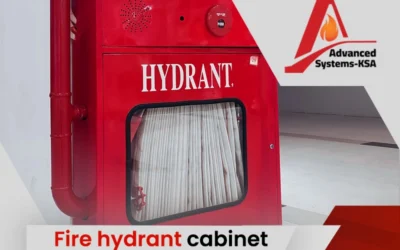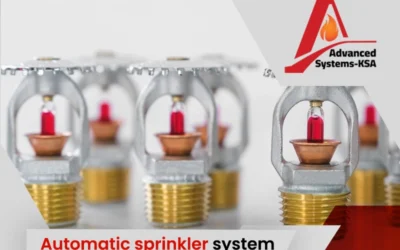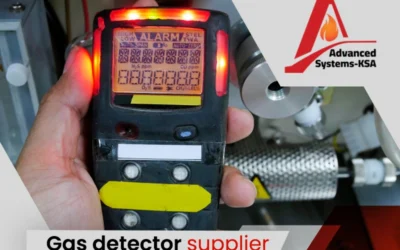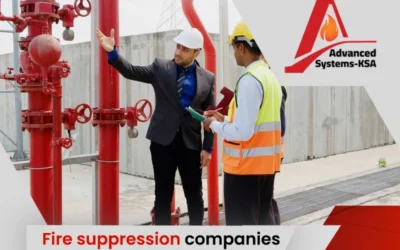Fire fighting fittings are vital in fire protection systems. They play a key role in controlling and putting out fires.These fittings facilitate the efficient flow of water or other extinguishing agents from hydrants, pumps, and hoses to the fire site, enabling firefighters to swiftly and effectively combat emergencies.
In this article, we will explore the diverse range of fire fighting fittings and their functions, shedding light on their significance in safeguarding lives and property.
Fire fighting Fittings Types
Fire Hose Couplings
Fire hose couplings are essential for seamlessly connecting fire hoses and other firefighting equipment. These fittings enable the secure and efficient transfer of water or firefighting foam. There are different types of fire hose couplings available, depending on regional standards and requirements. There are several types of couplings:
- Instantaneous couplings: such as Storz and Nakajima couplings, are widely used due to their quick and reliable connection mechanisms. They feature symmetrical lugs that interlock when the couplings are joined, ensuring a tight seal.
- Threaded couplings: including National Pipe Thread (NPT) and British Standard (BS) couplings, rely on threaded connections for secure attachment. These couplings require careful matching of thread sizes and types for proper functionality.
- Quarter-Turn Couplings: They offer rapid connection with just a quarter-turn twist. They are commonly used in some European countries and are gaining popularity in other regions due to their ease of use.
Fire Hydrant Fittings
Fire hydrants are vital components of fire protection systems, providing a readily available water supply for firefighting operations. Fire hydrant fittings allow fire hoses to be connected and disconnected easily, ensuring a swift response to fire incidents. These fittings include:
- Hydrant valves: regulate the flow of water from the hydrant to the fire hose.
- Adapters: help in connecting hoses of different sizes or coupling types to the hydrant.
- Caps: protect the hydrant outlets from debris and ensure their functionality during emergencies.
Regular maintenance and inspection of fire fighting fittings, including hydrant fittings, are necessary to ensure proper operation. This includes checking for leaks, ensuring smooth valve operation, and verifying the integrity of adapter threads.
Fire Hose Nozzles
Fire hose nozzles are critical for controlling the flow and direction of water or firefighting foam during fire suppression efforts. This type of fire fighting fittings determines the spray pattern and flow rate, allowing firefighters to adapt to different fire scenarios effectively. Several types of fire hose nozzles are available, each with its specific features.
Adjustable fog nozzles allow firefighters to adjust the spray pattern from a concentrated stream to a wide fog pattern. This flexibility is useful when dealing with different fire sizes and types. Smooth bore nozzles have a fixed orifice size, providing a concentrated stream for effective penetration into the fire. Combination nozzles offer a combination of both fog and straight stream patterns, providing versatility in firefighting operations.
Choosing the appropriate nozzle type depends on factors such as the available water supply and the desired firefighting technique. Regular inspection and maintenance of fire hose nozzles are essential to ensure their proper functionality.
Fire Pump Fittings
Fire pumps are essential for boosting water pressure in fire protection systems, ensuring an adequate water supply to fight fires. The fire pump fittings’ role is to connect the pumps to water sources and piping systems. This type of fire fighting fittings includes:
- Suction strainers: They prevent debris from entering the fire pump, protecting its internal components.
- Suction and discharge flanges: These provide secure connections between the pump and the piping system.
- Check valves: These valves allow water to flow in one direction, preventing backflow and maintaining system pressure.
To ensure that fire pump fittings operate and perform reliably, they must be installed meticulously and maintained consistently. This involves tasks such as examining suction strainers for any obstructions, scrutinizing the condition of gaskets and seals, and validating the effectiveness of check valves through testing.
Fire Sprinkler Fittings
Fire sprinkler systems are a vital component of fire protection in buildings, providing automatic fire suppression capabilities. Fire sprinkler fittings connect the sprinkler piping network, ensuring the proper distribution of water in case of a fire. These fittings include sprinkler heads, risers, and tees.
- Sprinkler heads: They are the visible part of the system and activate when exposed to high temperatures.
- Risers: connect the main water supply to the sprinkler system
- Tees: allow the branching of the piping network.
This type of fire-fighting fittings must be carefully selected, installed, and tested to ensure their proper operation during fire emergencies. Their maintenance includes checking for corrosion, ensuring proper alignment of sprinkler heads, and verifying the integrity of riser connections.
Fire Extinguisher Fittings

Firefighing Tools
Fire extinguishers are portable devices used for immediate fire suppression. These devices often have specific fittings to connect hoses or nozzles for the discharge of extinguishing agents. Fire extinguisher fittings typically include valves, discharge horns, and pressure gauges. The following explains the function of each one:
- Valves: Valves in fire extinguishers regulate the flow of extinguishing agents, allowing users to control the discharge.
- Discharge horns: These are attachments that direct the flow of the extinguishing agent, ensuring it reaches the desired target.
- Pressure gauges: They provide visual indications of the pressure within the extinguisher, allowing users to monitor its readiness for use.
Checking for leaks, verifying the condition of valves and discharge horns, and ensuring accurate pressure readings are important steps in their maintenance.
Conclusion
Fire fighting fittings are indispensable components of fire protection systems, enabling the effective control and extinguishment of fires. From fire hose couplings to fire extinguisher fittings, each type of fitting plays a specific role in ensuring the reliability and efficiency of firefighting operations.
Proper selection, installation, and maintenance of fire fighting fittings are of the utmost importance. Regular inspections, testing, and adherence to industry standards and regulations are necessary to ensure the functionality and safety of these fittings.
Contact Advanced Systems now and get a consultation regarding the appropriate fire fighting fittings in your porperty’s firefighting system.
Read More:
The Best Fire Sprinklers Companies






